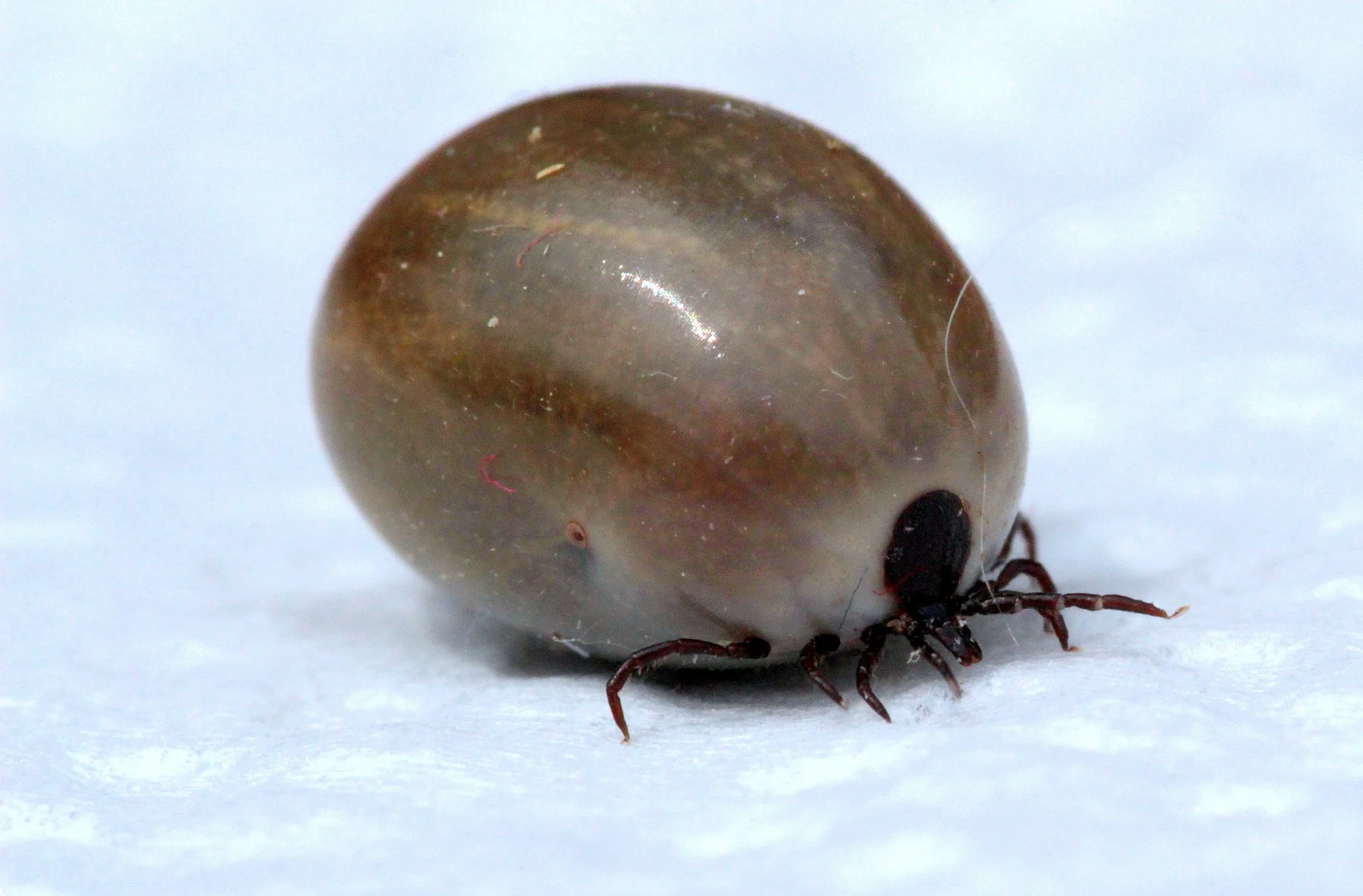The American dog tick, also known as the wood tick, gets its name from the fact that adult ticks prefer to feed on domestic dogs. But also on the fact that the tick species is only found in North America. The American dog tick belongs to the hard tick family, which means it has a tough external armor. Ticks in the United States are known to carry bacteria that cause diseases in humans, such as Rocky Mountain spotted fever. This disease is spread by sucking blood from their hosts. Tick exposure is most likely to occur in the spring and early summer.
What are the characteristics of an American Dog Tick?
They have brown with pale to gray patterns. American dog ticks are round and flattened in appearance. They have six legs as larvae, eight as nymphs, and ten as adults. They can effectively crawl through their environment, including animal fur and human hair, thanks to their extremities. American dog ticks can range in size from 5 mm to 15 mm. Their size depends on whether they have eaten the blood of the host.
Tick infestation
If an American dog tick has bitten a member of your family or a pet, you should be concerned. Additionally, American dog ticks are more likely to be attracted to premises with tall grass and outside dogs. Sightings in gardens and potted plants, for example, indicate a possible infestation because these are frequent places for females to lay their eggs.
Tick bite symptoms
Itching, fever, and tick paralysis are all symptoms of American dog tick bites. Rashes surrounding the tick bite are the predominant symptom of tularemia and Rocky Mountain spotted fever, so keep an eye out for these. Ticks can’t feed right away after latching on to a host because their mouthparts need time to imbed deeply enough to suck the blood. This makes it critical to remove a tick from the skin as soon as possible.
How to get rid of American dog ticks
Apply an insect repellent with an EPA-registered chemical, such as DEET, picaridin, or oil of lemon eucalyptus, to avoid being bitten by an American dog tick. Wear long-sleeved shirts and slacks, ideally light-colored so ticks may be seen, and tuck your pants into your socks. When going indoors, inspect your clothing and skin to get rid of ticks and reduce dangers. Any garments that have been worn outside should be washed right away.
If an American dog tick bites you, use fine-tipped tweezers to grasp the tick as close to the skin’s surface as possible. Pull up with even, steady pressure. The mouthparts of the tick may break off and remain in the skin if you twist or jerk it. After the tick has been removed, clean the bitten site thoroughly with soap and water. The tick should then be flushed down the toilet.
Homeowners who have outside dogs and live in areas with long grass are more likely to come into touch with American dog ticks. Keep the grass around the house well-trimmed and inspect dogs and people thoroughly after outings to avoid any form of infection. Contact a registered pest control technician if you suspect a tick infestation on your property.
When going on walks or hikes with your dog, stay away from long grass areas. But even then your dog is in danger because ticks can even fall from higher structures, such as trees. Check your dog out whenever you come from a walk, and contact your vet in case you discover a tick.
Tick Diseases and Threats
Rocky Mountain spotted fever (RMSF) is caused by the bacterium Rickettsia and is spread by the American dog tick. Rocky Mountain spotted fever has been a recognized disease in the United States since the 1920s, according to the CDC. High fever, chills, muscle aches, and headaches are among symptoms of Rocky Mountain spotted fever. In certain situations, a rash that spreads to the extremities develops. It normally appears 2-4 days after the fever has started. Antibiotics are used to treat the infection, but it can be fatal if not treated.
Tularemia is another disease that American dog ticks are known to transmit. Rabbits, mice, squirrels, and other tiny animals are carriers. Fever, chills, and sensitive lymph nodes are some of the symptoms. At the site of the tick bite, an ulcer can occur.
Furthermore, tick paralysis caused by American dog ticks can induce severe respiratory distress and muscle weakness in those who are infected. Please contact a healthcare expert if you feel you have contracted one of the diseases caused by American dog ticks listed above.
If you notice a tick on your dog, take him out with a tweezer immediately. After that clean the area and contact your vet right away.
Some additional content about ticks:
- How To Remove A Tick From A Dog
- What Does A Tick Look Like On A Dog?
- How To Find And Remove Ticks From Your Golden Retriever
- Ticks On Golden Retrievers: Identification, Removal & Prevention

